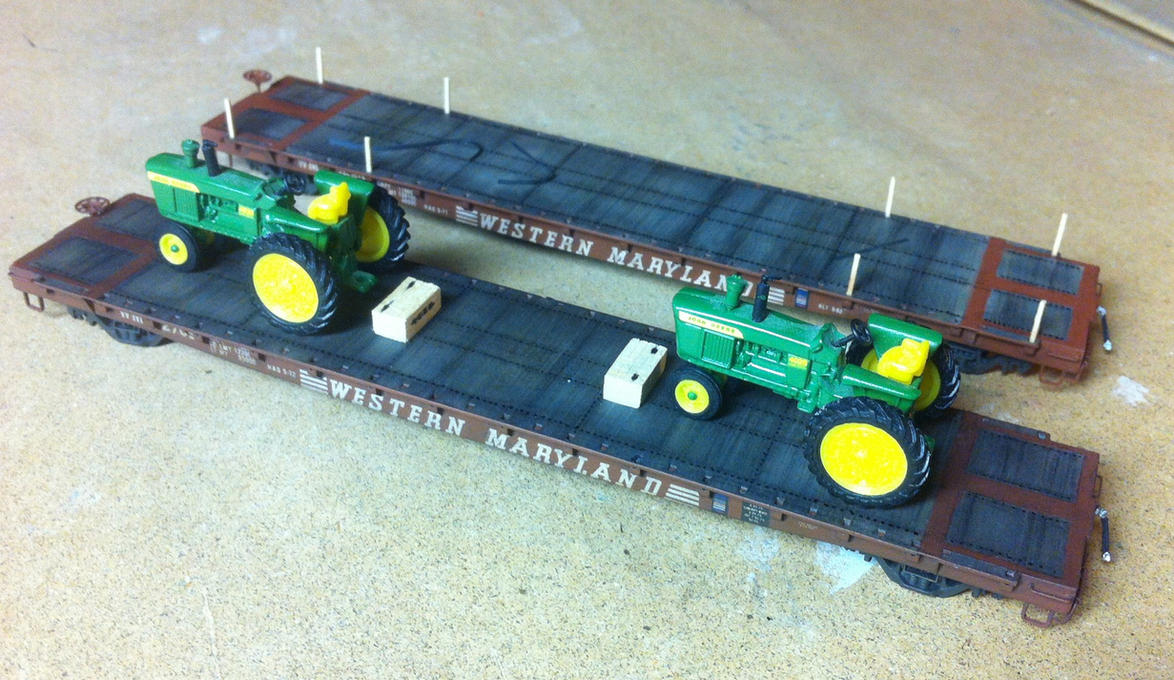Install the app
How to install the app on iOS
Follow along with the video below to see how to install our site as a web app on your home screen.
Note: This feature may not be available in some browsers.
You are using an out of date browser. It may not display this or other websites correctly.
You should upgrade or use an alternative browser.
You should upgrade or use an alternative browser.
Show your models!
- Thread starter simulatortrain
- Start date
deadpoolmx55
LETS GO PENS!

all n scale
cascaderailroad
New member
The last man standing, who has amassed the most toys ... wins !
captainkman
You are reading this.
Are any of you using DDC to operate your models?
Well I don't have a layout, and I haven't operated my trains for about a year and a half.
"I don't always operate my trains, but when I do, I use a Railpower DC power pack."
Well I don't have a layout, and I haven't operated my trains for about a year and a half.
"I don't always operate my trains, but when I do, I use a Railpower DC power pack."
I think you would enjoy it more using this:
http://en.wikipedia.org/wiki/Digital_Command_Control
Here's a snip from it,
How DCC works;
A DCC command station, in combination with its booster, modulates the voltage on the track to encode digital messages while providing electric power.
The voltage to the track is a bipolar DC signal. This results in a form of alternating current, but the DCC signal does not follow a sine wave. Instead, the command station quickly switches the direction of the DC voltage, resulting in a modulated pulse wave. The length of time the voltage is applied in each direction provides the method for encoding data. To represent a binary one, the time is short (nominally 58µs for a half cycle), while a zero is represented by a longer period (nominally at least 100µs for a half cycle).
Each locomotive is equipped with a mobile DCC decoder that takes the signals from the track and, after rectification, routes power to the motor as requested. Each decoder is given a unique running number, and will ignore all commands intended for a different decoder, thus providing independent control of locomotives anywhere on the layout, without special wiring requirements. Power can also be routed to lights, smoke generators, and sound generators. These extra functions can be operated remotely from the DCC controller. Stationary decoders can also receive commands from the controller in a similar way to allow control of turnouts, uncouplers, other operating accessories (such as station announcements) and lights.
In a segment of DCC-powered track, it is possible to power a single analog model locomotive by itself (or in addition to) the DCC equipped engines, depending on the choice of commercially available base systems. The technique is known as zero stretching. Either the high or the low pulse of the zero bits can be extended to make the average voltage (and thus the current) either forward or reverse. However, because the raw power contains a heavy AC component, DC motors heat up much more quickly than they would on DC power, and some motor types (particularly coreless electric motors) can be damaged by a DCC signal.
jacksonbarno
Alco Spoken Here
What railroads does everyone model?
I model PRR, NYC/P&LE, CNJ/LV, and B&O, with PRR being the main railroad that I am committed to.
I model PRR, NYC/P&LE, CNJ/LV, and B&O, with PRR being the main railroad that I am committed to.
captainkman
You are reading this.
I model a railway - British Railways. 1960's era, so BR Late period.
simulatortrain
jointed freaking rails

Some cars I've almost finished
ryanstrains
Moderator

HO VIA car out in the snow
Is that the Arnold or Kato version of the GG1? (I also do N Scale)
That's the Kato one. I was amazed that one of the road numbers they had was the exact same one I photographed back in the early 1980's.












